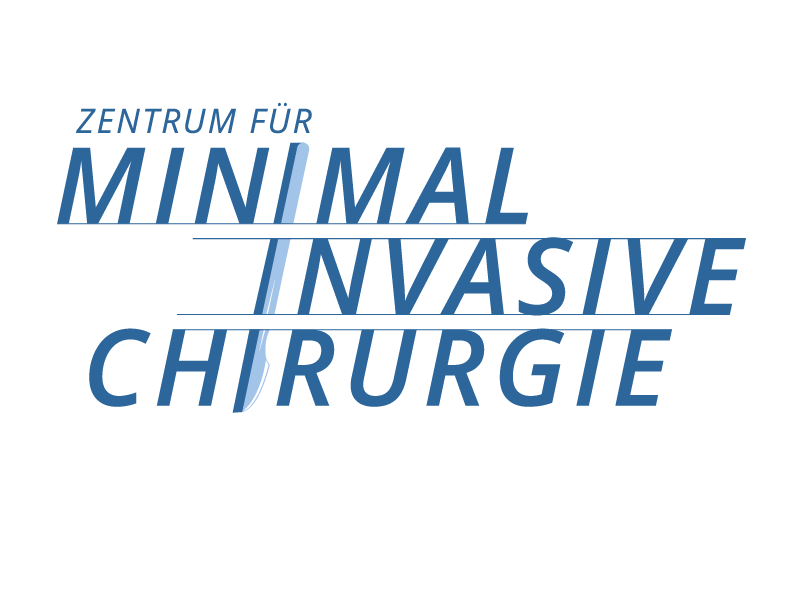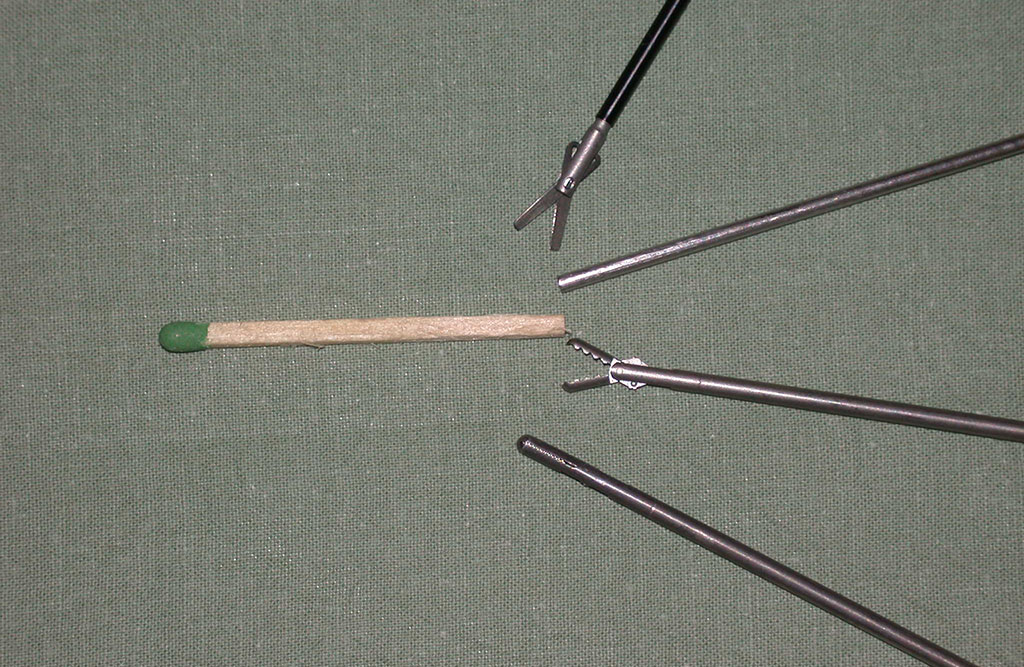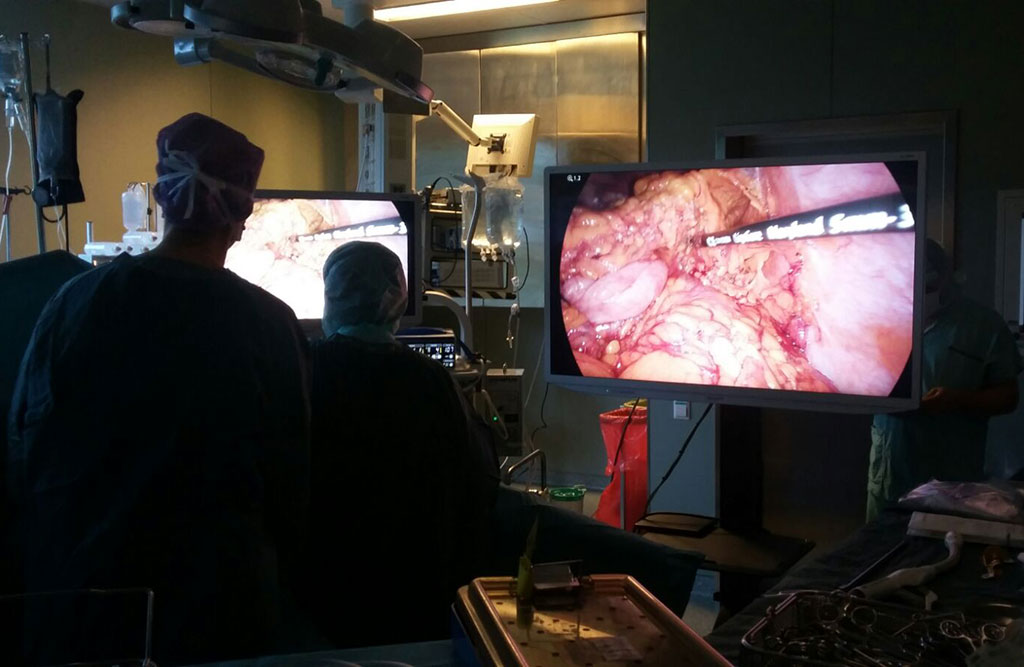
Minimally Invasive Surgery
Slender, rodlike instruments with a diameter of 214 mm are used for laparoscopic surgery. They are introduced into the body cavity through thin synthetic tubes. The inner abdomen and the surgical area are illuminated with xenon light. The 2 mm miniature instruments are introduced through small punctures rather than incisions. Some operations can even be performed through a single incision in the navel that leaves only a small hidden scar.
Advantages
The advantage of minimally invasive surgery is that it minimizes surgical trauma: the smaller the surgical wound, the smaller the risk of infection.
After the operation, the patient can get up and can also eat on the same day. There is less postoperative pain and recovery is fast. This means that hospitalization is shorter and the patient can return to work and/or everyday activities sooner. The danger of a scar hernia as a late complication is very slight. Finally, the cosmetic results are so good that one speaks of scar-poor or scarless surgery. We do not offer outpatient surgeries as a short period of hospitalization during which the patient is under medical observation is an important for the patient’s safety.



